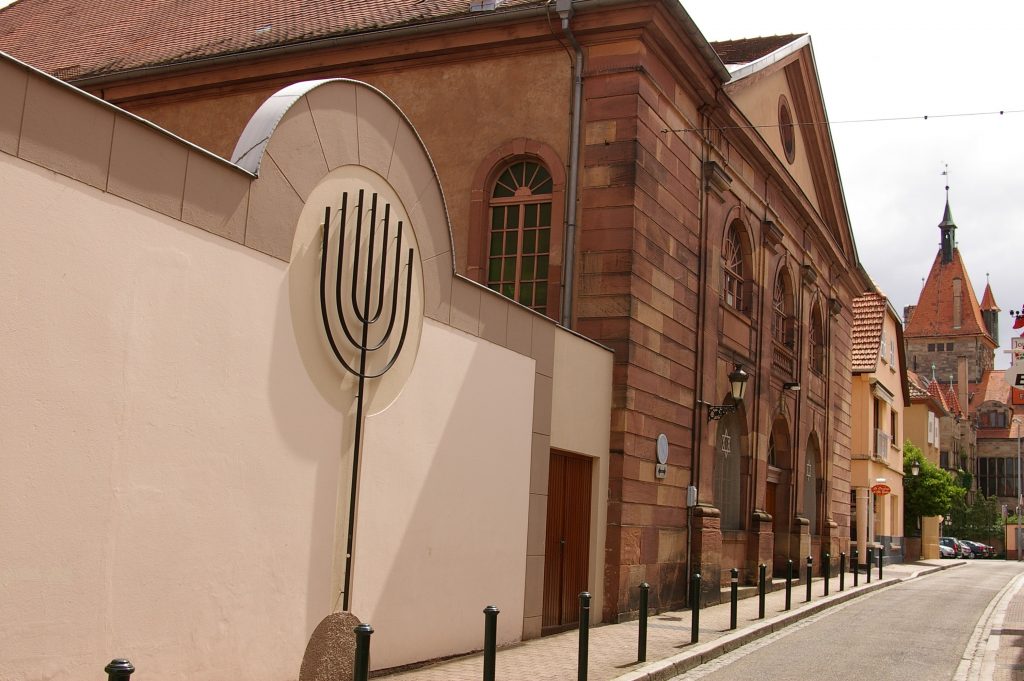Haguenau is one of the oldest Jewish communities in Alsace. The Jews lived there almost without interruption since the Middle Ages, probably in the 12th century, and enjoyed the same freedoms as the other inhabitants, except for a few episodes, mainly of a more national scope, affecting all regions.

The first synagogue was confiscated during the expulsion of 1349. Upon their return, the Haguenovian Jews built a synagogue in a house at 8 rue du Sel. This was rebuilt after a fire in 1676 and served as a place of worship until 1820, when the present synagogue was built.
On the eve of the Second World War, there were 600 Jews in Haguenau. The Shoah decimated a quarter of them. Destroyed during the Occupation and damaged by a bombing raid at the Liberation, the synagogue was restored, with its outbuildings, to its former glory in 1959. Jewish life resumed after the war, marked by the inauguration of several rooms and Sifre Torah. Thus, in 1968, the community was composed of nearly 300 people, reinforced in particular by the arrival of Jews from North Africa. At the turn of the century, 700 Haguenovian Jews lived there.
The Jewish cemetery of Haguenau is one of the oldest in Alsace, containing more than 3,000 graves dating back to the 17th century. Many of the graves were vandalised and destroyed during the war.
In 2021, guided tours and a two-day historical symposium marked the synagogue’s bicentenary.
A concert combining liturgical and folk music was held at the Haguenau Synagogue on 22 June 2025, during a meeting between the Le Chant Sacré choir and the Klezm’hear ensemble.
Sources : judaisme.sdv.fr, Encyclopaedia Judaica